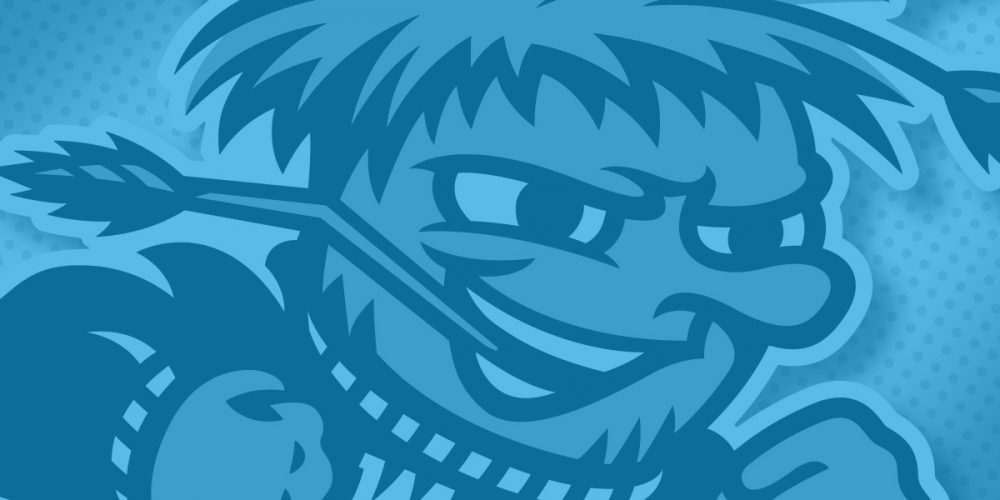
Wu and I: How a mascot became my marketing muse
Hanging in a corner of our basement is a small wooden plaque with an even smaller piece of blonde, highly varnished wood glued to its face. The wood, an original section of Henry Levitt Arena’s hardwood floor (home to Wichita State University basketball from 1954 to 2003) is topped off by a brushed, bronze-ish plate inscribed with the words:
“Craig Lindeman, Shocker Fan Since Birth.”
While most people would probably read those words and quickly dismiss them as a bit of all-American, sports-crazed hyperbole, I can honestly say that it’s not far from the truth.
Growing up, I either attended Shocker basketball games in person or listened to radio broadcasts from the backseat of the family sedan. My dad is an alum, my brother is an alum, my wife is an alum and I am an alum.
To put it simply, being a Shocker is a big part of who I am.
So, when I got the opportunity to join the marketing team at Wichita State in 2000, I jumped at the chance. Over the next 15 and a half years, I poured my passion into my profession and did what marketers do—looked for unique ways to cut through the clutter, attract attention and create strong, long-lasting relationships.
Luckily, when it came to finding the “unique” at Wichita State, I didn’t have to look very hard.
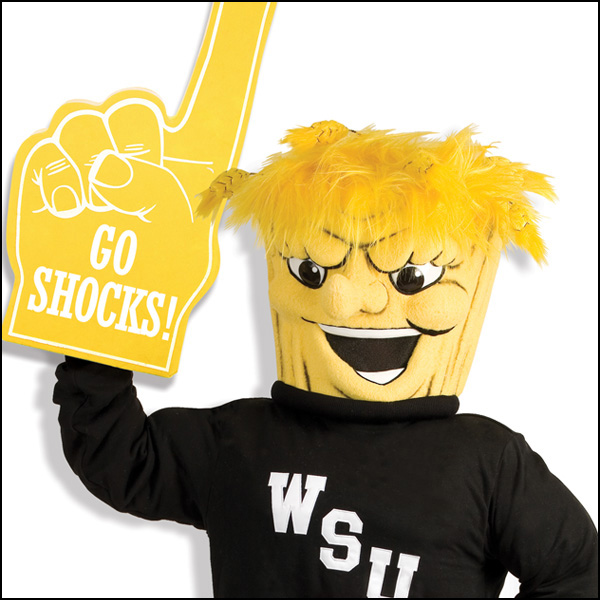
Different is good
WuShock, Wichita State’s no-nonsense, muscle-bound-bundle-of-wheat mascot, had been a part of my life as long as I can remember, but once I went to work at Wichita State, I began to view him in a completely new way. What was once an extremely odd, eyebrow-raising, “what-the-hell-is-that?” kind of character, was now my greatest marketing tool. After all, while there is an entire flock of birds and more wildcat mascots than you can probably count, there’s only one Wu.
He’s an original—and when it comes to building a brand, originality counts.
So, as I climbed the ranks at Wichita State, I began looking for more and more ways to use Wu in the materials my department developed. However, it wasn’t until we were tasked with creating a new multi-media campaign highlighting the impact Shockers were making in the local community that I found the perfect vehicle for Wu.
The resulting “Everywhere You Go” campaign, which featured Wu appearing in a variety of settings from the floor of an aircraft manufacturer to the stage of a theatre, was intended to be a cross between “This is Sportscenter” and “The Office” where Wu represented thousands of WSU alums living and working in the local community.
The campaign was a lot of fun to work on (I even took turns being Wu on screen) and people loved it. But most importantly, it was an exercise that solidified my belief in the marketing power of Wu.
Sowing the seeds
After the success of the “Everywhere You Go” campaign, my professional relationship with Wu kind of snowballed.
To help extend the reach of the TV and print campaign, my team and I developed a unique non-traditional, guerrilla marketing tactic we called “Where’s Wu” which involved taking Wu—completely unannounced—into random, everyday settings around town. During the campaign, if you lived in Wichita, there was a chance you could run into Wu grocery shopping, working out at the Y, attending a concert, trick or treating or even rollerblading at a local park. And, if you did, you would have been given a custom “Where’s Wu” button, T-shirt or Wu hat that would direct you to a special website where you could post pictures or share a story about your encounter.
Again, aside from an occasional, terrified-out-of-its-wits preschooler, people loved it. Wu would get mobbed (seriously, we’re talking low-level Beatlemania) and our marketing materials—disguised as keepsakes—would disappear within minutes.
All of that success just made me think bigger and bigger—ultimately culminating in the coordination of a 60th birthday blowout for Wu.
Held at halftime of a men’s basketball game, the party brought Wu together with his creator, Wilbur Elsea; the first man to build and wear a Wu costume, Dave Johnson; and 10,500 of Wu’s closest friends.
All in all, it was a logistical nightmare, but worth every headache.
Getting social
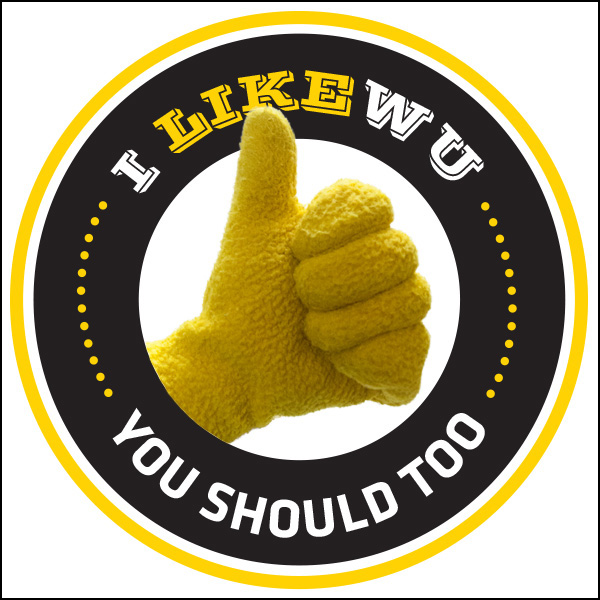
As successful, and as much fun, as it was to take Wu out into the community, I am proudest and probably most intimately tied to his online persona.
My involvement with Wu online started around the same time as the “Everywhere You Go” campaign, when I happened to stumble across a dormant WuShock Facebook page. Seeing untapped potential, I checked around to see who was behind it and when I discovered that nobody really wanted anything to do with it, I decided to take it on myself.
From that point on, every morning I would log into the account, update his status with something I hoped would be a little witty and attention grabbing and then send off personal messages to each of his friends celebrating a birthday. In all, I probably only spent half about half an hour on it each day, but the results were immediate and they were incredible.
When I took over the page in 2007, Wu had roughly 500 Facebook friends.
By May of 2009, Wu had met Facebook’s 5,000-friend limit (an accomplishment less than 1,000 people in the world had accomplished at the time). Then, as a result of not being able to accept any new friend requests, I set up a WuShock fan page which, as of today, has nearly 9,500 likes.
My overall goal for Wu’s social media presence was to make him—and by association, the university—the most approachable and engaging university in the state of Kansas. Just as he was during a basketball game, online, Wu was the consummate cheerleader, energizing his fans and giving them something they could share then with others.
But above all, it was about building relationships.
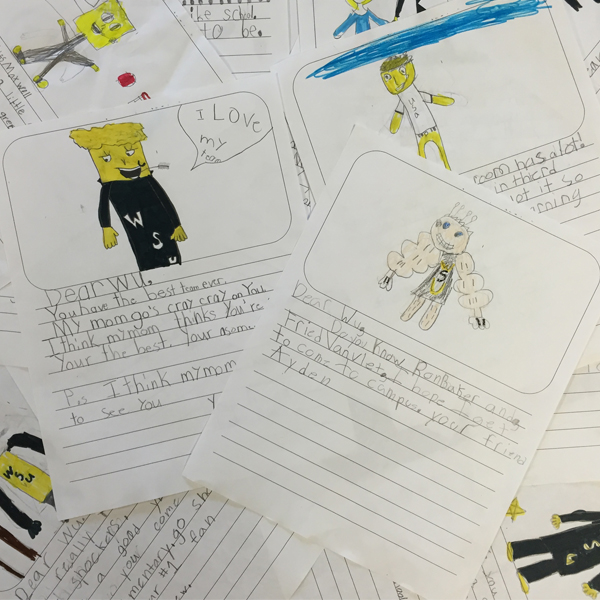
As Wu, I spent a considerable amount of my time engaging with classrooms of elementary students and young fans too shy to come up to Wu at games in hopes that just one positive interaction with him would in turn create a lifelong fan.
One of the most touching interactions I had as Wu began with a private message from a man named Timothy Mesch. His son, Zach, a current WSU student and former Wu, had been diagnosed with leukemia over Thanksgiving break and wasn’t doing well. Timothy was reaching out in the hope that Wu could come out and visit Zach in the hospital in Colorado.
I was floored when I received the message and wrote back saying I/Wu would see what I could do and then immediately started making calls. Within days, an out-and-back trip was arranged for Wu, the dean of enrollment and numerous students to visit Zach and participate in a benefit walk in his honor.
The visit momentarily lifted Zach’s spirits and he was even briefly diagnosed cancer-free, however he ultimately relapsed and passed away just a few months later. But while the story didn’t have the happy ending we were all hoping for, I took solace in the fact that I had managed to touch the heart of Zach’s dad enough that he continued to correspond with Wu through Facebook up until the day I left the university.
Life after Wu
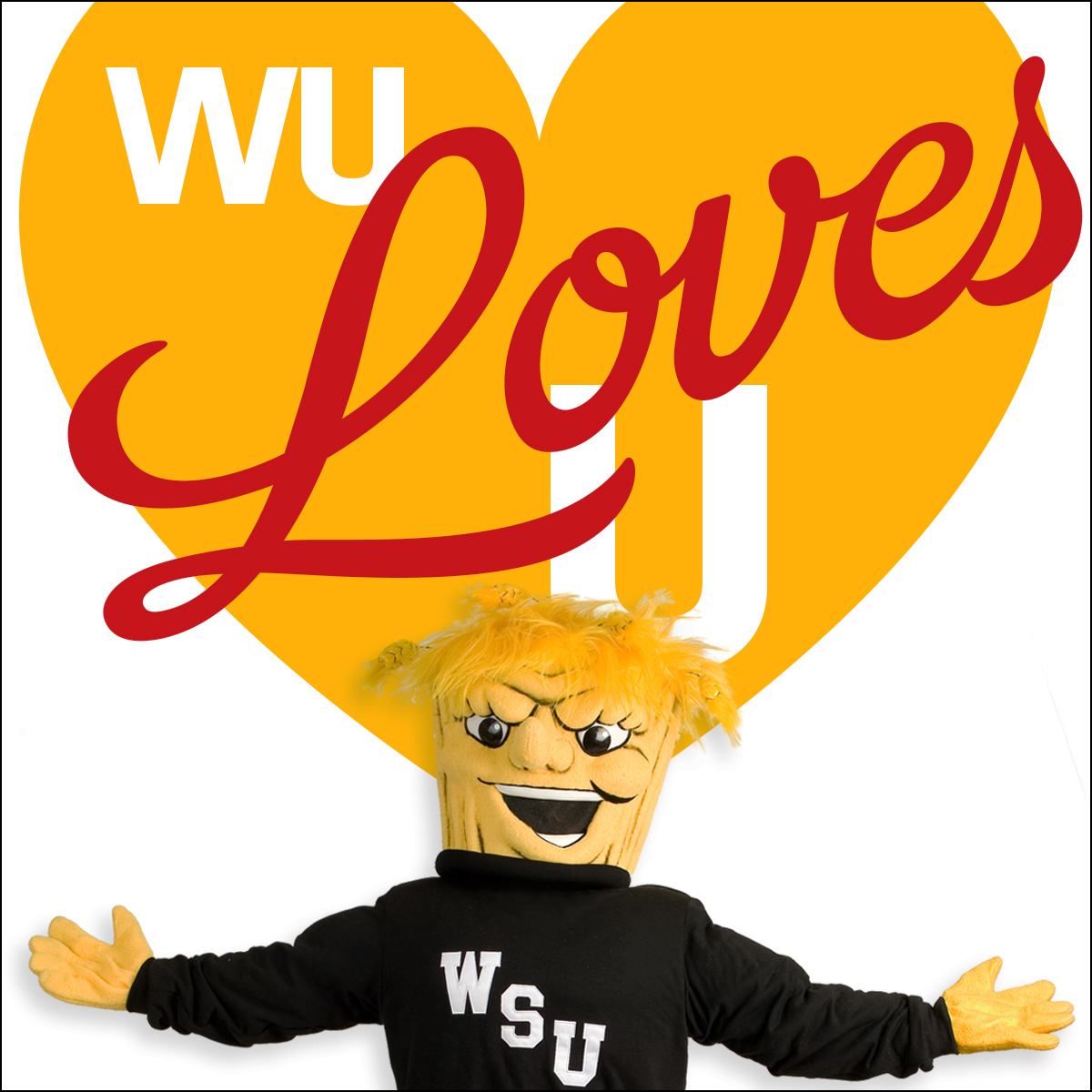
When I finally decided it was time for me to move on from the university, it was hard. Not just because I felt emotionally connected to the university or because I had developed such strong relationships with the people I worked with, but also because of Wu. In many ways Wu had become a part of me and I was extremely protective of him. I worried what would become of him and in the weeks and months after I left I would routinely check in to see how he was doing.
As more and more time passed, I was eventually able to look back on the work I did with Wu and reflect on what worked and what didn’t—knowing that while I may never have a marketing opportunity like that again, there were lessons to be learned.
What Wu taught me
- No matter what industry you’re in, you do your best work when you’re passionate about your product or service.
- You may not be blessed with a seven-foot-tall animated shock of wheat, but there is always something unique about what you’re working with, you just have to find it. Once you do, give it a personality, give it a voice and start building relationships.
- If you do have a mascot (or something similar) by all means use it. They can say and do things you can’t and—if done right—they can provide a friendly, consistent face for your operation, building relationships that can last generations.
Comments
October 19, 2017
You made Wu real.And, I think he may have lost his heart when you left Wichita State.